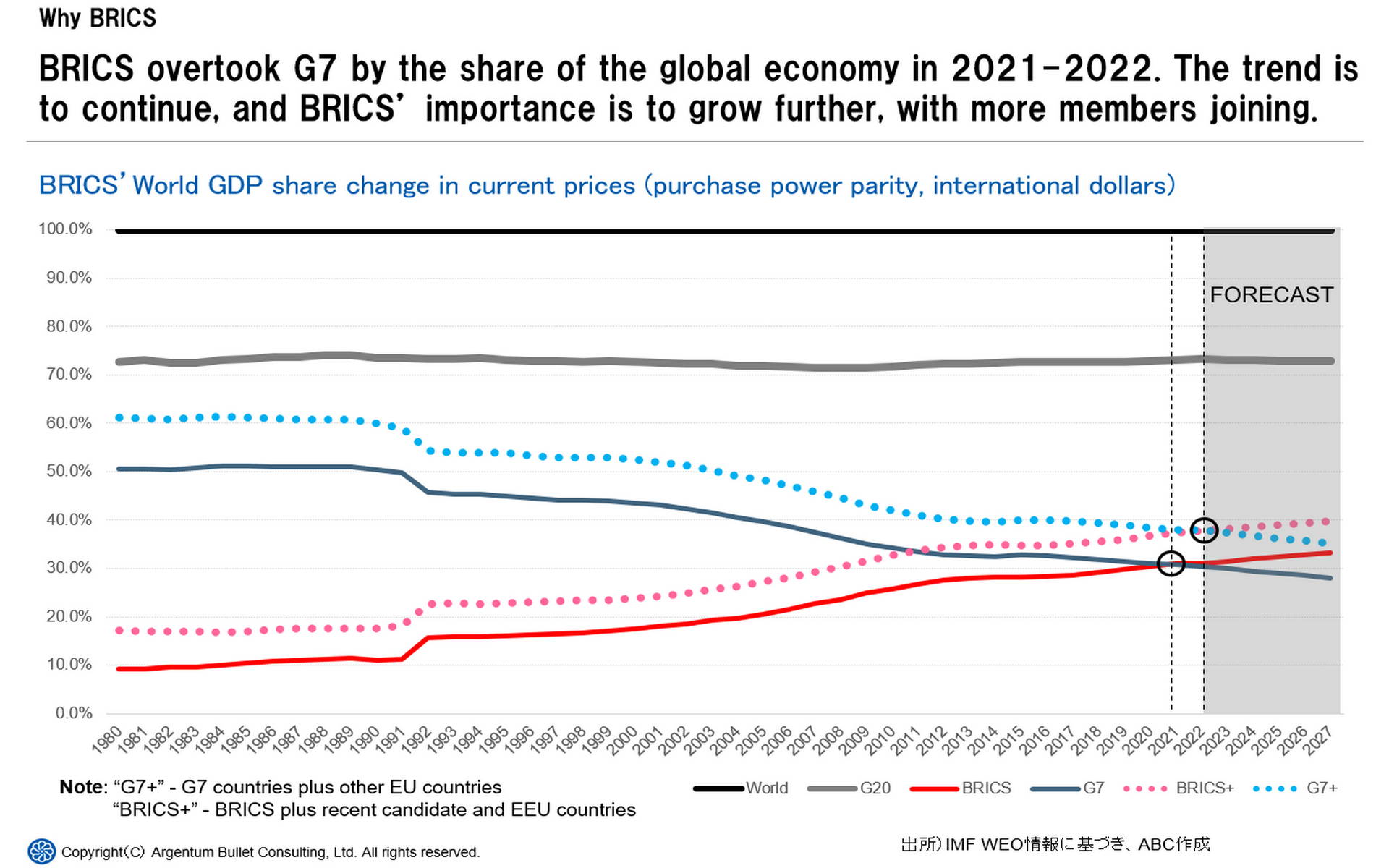BRICS countries (Brazil, Russia, India, China, and South Africa) have been growing in importance, especially since “globalization” started in the 1990-ies. One of the integral measures of a group of countries is its share of the world’s GDP. We can see that the BRICS countries have been increasing their share of the world’s GDP measured on the purchase power parity basis and overtook the previously dominant G7 group of countries. In 2021 the BRIC’s share of the world GDP was 30.9%, as opposed to 30.7% for G7. IMF and many other institutions forecast that this trend is going to continue, and the weight of BRICS is expected to grow further, while the weight of G7 is expected to diminish.
If we expand both groups to include all European Union countries and make up a so-called G7+ group and include countries that openly expressed their intention to join/cooperate with BRICS and countries of the Eurasian Economic Union in the so-called BRICS+ group, the trend still remains valid. The economic weights of both groups obviously go up; still, BRICS+ weight is on the upward trajectory, while G7+ is on the downward path.
So, why BRICS? The most obvious answer is that this group of countries represents the largest sector of the world economy today and will grow its size and relative importance in the future. First identified by BRICS abbreviation as a group of prospective emerging countries, it has been developing into a more cohesive group of countries with its own institutional cooperation structures, policy alignment, etc. Seeing the importance of the emerging bloc, many countries express interest in joining BRICS, among them such regional heavyweights as Argentina, Egypt, Iran, Saudi Arabia, and Türkiye. Hence, any company serious about its international business prospects needs to think about its presence and interaction with BRICS.


